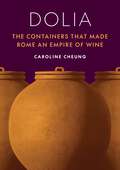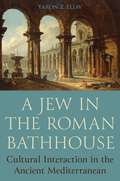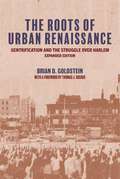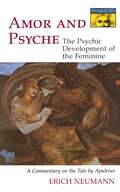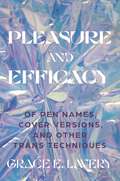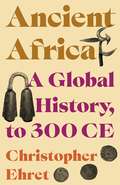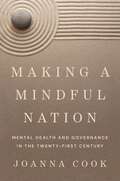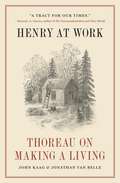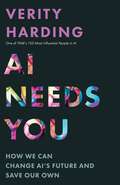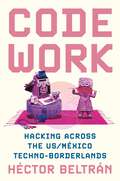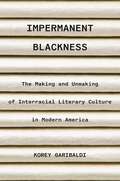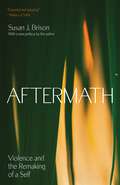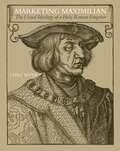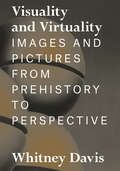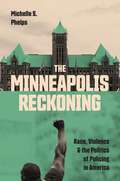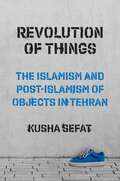- Table View
- List View
Dolia: The Containers That Made Rome an Empire of Wine
by Caroline CheungThe story of the Roman Empire’s enormous wine industry told through the remarkable ceramic storage and shipping containers that made it possibleThe average resident of ancient Rome drank two-hundred-and-fifty liters of wine a year, almost a bottle a day, and the total annual volume of wine consumed in the imperial capital would have overflowed the Pantheon. But Rome was too densely developed and populated to produce its own food, let alone wine. How were the Romans able to get so much wine? The key was the dolium—the ancient world’s largest type of ceramic wine and food storage and shipping container, some of which could hold as much as two-thousand liters. In Dolia, classicist and archaeologist Caroline Cheung tells the story of these vessels—from their emergence and evolution to their major impact on trade and their eventual disappearance.Drawing on new archaeological discoveries and unpublished material, Dolia uncovers the industrial and technological developments, the wide variety of workers and skills, and the investments behind the Roman wine trade. As the trade expanded, potters developed new techniques to build large, standardized dolia for bulk fermentation, storage, and shipment. Dolia not only determined the quantity of wine produced but also influenced its quality, becoming the backbone of the trade. As dolia swept across the Mediterranean and brought wine from the far reaches of the empire to the capital’s doorstep, these vessels also drove economic growth—from rural vineyards and ceramic workshops to the wine shops of Rome.Placing these unique containers at the center of the story, Dolia is a groundbreaking account of the Roman Empire’s Mediterranean-wide wine industry.
Dolia: The Containers That Made Rome an Empire of Wine
by Caroline CheungThe story of the Roman Empire’s enormous wine industry told through the remarkable ceramic storage and shipping containers that made it possibleThe average resident of ancient Rome drank two-hundred-and-fifty liters of wine a year, almost a bottle a day, and the total annual volume of wine consumed in the imperial capital would have overflowed the Pantheon. But Rome was too densely developed and populated to produce its own food, let alone wine. How were the Romans able to get so much wine? The key was the dolium—the ancient world’s largest type of ceramic wine and food storage and shipping container, some of which could hold as much as two-thousand liters. In Dolia, classicist and archaeologist Caroline Cheung tells the story of these vessels—from their emergence and evolution to their major impact on trade and their eventual disappearance.Drawing on new archaeological discoveries and unpublished material, Dolia uncovers the industrial and technological developments, the wide variety of workers and skills, and the investments behind the Roman wine trade. As the trade expanded, potters developed new techniques to build large, standardized dolia for bulk fermentation, storage, and shipment. Dolia not only determined the quantity of wine produced but also influenced its quality, becoming the backbone of the trade. As dolia swept across the Mediterranean and brought wine from the far reaches of the empire to the capital’s doorstep, these vessels also drove economic growth—from rural vineyards and ceramic workshops to the wine shops of Rome.Placing these unique containers at the center of the story, Dolia is a groundbreaking account of the Roman Empire’s Mediterranean-wide wine industry.
A Jew in the Roman Bathhouse: Cultural Interaction in the Ancient Mediterranean
by Yaron EliavA provocative account of Jewish encounters with the public baths of ancient RomePublic bathhouses embodied the Roman way of life, from food and fashion to sculpture and sports. The most popular institution of the ancient Mediterranean world, the baths drew people of all backgrounds. They were places suffused with nudity, sex, and magic. A Jew in the Roman Bathhouse reveals how Jews navigated this space with ease and confidence, engaging with Roman bath culture rather than avoiding it.In this landmark interdisciplinary work of cultural history, Yaron Eliav uses the Roman bathhouse as a social laboratory to reexamine how Jews interacted with Graeco-Roman culture. He reconstructs their thoughts, feelings, and beliefs about the baths and the activities that took place there, documenting their pleasures as well as their anxieties and concerns. Archaeologists have excavated hundreds of bathhouse facilities across the Mediterranean. Graeco-Roman writers mention the bathhouse frequently, and rabbinic literature contains hundreds of references to the baths. Eliav draws on the archaeological and literary record to offer fresh perspectives on the Jews of antiquity, developing a new model for the ways smaller and often weaker groups interact with large, dominant cultures.A compelling and richly evocative work of scholarship, A Jew in the Roman Bathhouse challenges us to rethink the relationship between Judaism and Graeco-Roman society, shedding new light on how cross-cultural engagement shaped Western civilization.
A Jew in the Roman Bathhouse: Cultural Interaction in the Ancient Mediterranean
by Yaron EliavA provocative account of Jewish encounters with the public baths of ancient RomePublic bathhouses embodied the Roman way of life, from food and fashion to sculpture and sports. The most popular institution of the ancient Mediterranean world, the baths drew people of all backgrounds. They were places suffused with nudity, sex, and magic. A Jew in the Roman Bathhouse reveals how Jews navigated this space with ease and confidence, engaging with Roman bath culture rather than avoiding it.In this landmark interdisciplinary work of cultural history, Yaron Eliav uses the Roman bathhouse as a social laboratory to reexamine how Jews interacted with Graeco-Roman culture. He reconstructs their thoughts, feelings, and beliefs about the baths and the activities that took place there, documenting their pleasures as well as their anxieties and concerns. Archaeologists have excavated hundreds of bathhouse facilities across the Mediterranean. Graeco-Roman writers mention the bathhouse frequently, and rabbinic literature contains hundreds of references to the baths. Eliav draws on the archaeological and literary record to offer fresh perspectives on the Jews of antiquity, developing a new model for the ways smaller and often weaker groups interact with large, dominant cultures.A compelling and richly evocative work of scholarship, A Jew in the Roman Bathhouse challenges us to rethink the relationship between Judaism and Graeco-Roman society, shedding new light on how cross-cultural engagement shaped Western civilization.
The Roots of Urban Renaissance: Gentrification and the Struggle over Harlem, Expanded Edition
by Brian D. GoldsteinAn acclaimed history of Harlem’s journey from urban crisis to urban renaissanceWith its gleaming shopping centers and refurbished row houses, today’s Harlem bears little resemblance to the neighborhood of the midcentury urban crisis. Brian Goldstein traces Harlem’s Second Renaissance to a surprising source: the radical social movements of the 1960s that resisted city officials and fought to give Harlemites control of their own destiny. Young Harlem activists, inspired by the civil rights movement, envisioned a Harlem built by and for its low-income, predominantly African American population. In the succeeding decades, however, the community-based organizations they founded came to pursue a very different goal: a neighborhood with national retailers and increasingly affluent residents. The Roots of Urban Renaissance demonstrates that gentrification was not imposed on an unwitting community by unscrupulous developers or opportunistic outsiders. Rather, it grew from the neighborhood’s grassroots, producing a legacy that benefited some longtime residents and threatened others.
Amor and Psyche: The Psychic Development of the Feminine: A Commentary on the Tale by Apuleius. (Mythos Series) (Bollingen Series #687)
by Erich NeumannThe renowned tale of Amor and Psyche, from Apuleius's second-century Latin novel The Golden Ass, is one of the most charming fragments of classical literature. Neumann chose it as the exemplar of an unusual study of feminine psychology. Unfolding the spiritual and mythical background of the pagan narrative, he shows how the contest between the mortal maid Psyche and the great goddess Aphrodite over the god Amor--Aphrodite's son, Psyche's husband--yields surprising and valuable insights into the psychic life of women.
Pleasure and Efficacy: Of Pen Names, Cover Versions, and Other Trans Techniques
by Grace Elisabeth LaveryA leading trans scholar and activist explores cultural representations of gender transition in the modern periodIn Pleasure and Efficacy, Grace Lavery investigates gender transition as it has been experienced and represented in the modern period. Considering examples that range from the novels of George Eliot to the psychoanalytic practice of Sigmund Freud to marriage manuals by Marie Stopes, Lavery explores the skepticism found in such works about whether it is truly possible to change one’s sex. This ambivalence, she argues, has contributed to both antitrans oppression and the civil rights claims with which trans people have confronted it. Lavery examines what she terms “trans pragmatism”—the ways that trans people resist medicalization and pathologization to achieve pleasure and freedom. Trans pragmatism, she writes, affirms that transition works, that it is possible, and that it happens.With Eliot and Freud as the guiding geniuses of the book, Lavery covers a vast range of modern culture—poetry, prose, criticism, philosophy, fiction, cinema, pop music, pornography, and memes. Since transition takes people out of one genre and deposits them in another, she suggests, it should be no surprise that a cultural history of gender transition will also provide, by accident, a history of genre transition. Considering the concept of technique and its associations with feminine craftiness, as opposed to masculine freedom, Lavery argues that techniques of giving and receiving pleasure are essential to the possibility of trans feminist thriving—even as they are suppressed by patriarchal and antitrans feminist philosophies. Contesting claims for the impossibility of transition, she offers a counterhistory of tricks and techniques, passed on by women to women, that comprises a body of knowledge written in the margins of history.
Pleasure and Efficacy: Of Pen Names, Cover Versions, and Other Trans Techniques
by Grace Elisabeth LaveryA leading trans scholar and activist explores cultural representations of gender transition in the modern periodIn Pleasure and Efficacy, Grace Lavery investigates gender transition as it has been experienced and represented in the modern period. Considering examples that range from the novels of George Eliot to the psychoanalytic practice of Sigmund Freud to marriage manuals by Marie Stopes, Lavery explores the skepticism found in such works about whether it is truly possible to change one’s sex. This ambivalence, she argues, has contributed to both antitrans oppression and the civil rights claims with which trans people have confronted it. Lavery examines what she terms “trans pragmatism”—the ways that trans people resist medicalization and pathologization to achieve pleasure and freedom. Trans pragmatism, she writes, affirms that transition works, that it is possible, and that it happens.With Eliot and Freud as the guiding geniuses of the book, Lavery covers a vast range of modern culture—poetry, prose, criticism, philosophy, fiction, cinema, pop music, pornography, and memes. Since transition takes people out of one genre and deposits them in another, she suggests, it should be no surprise that a cultural history of gender transition will also provide, by accident, a history of genre transition. Considering the concept of technique and its associations with feminine craftiness, as opposed to masculine freedom, Lavery argues that techniques of giving and receiving pleasure are essential to the possibility of trans feminist thriving—even as they are suppressed by patriarchal and antitrans feminist philosophies. Contesting claims for the impossibility of transition, she offers a counterhistory of tricks and techniques, passed on by women to women, that comprises a body of knowledge written in the margins of history.
Ancient Africa: A Global History, to 300 CE
by Distinguished Re Christopher EhretA panoramic narrative that places ancient Africa on the stage of world historyThis book brings together archaeological and linguistic evidence to provide a sweeping global history of ancient Africa, tracing how the continent played an important role in the technological, agricultural, and economic transitions of world civilization. Christopher Ehret takes readers from the close of the last Ice Age some ten thousand years ago, when a changing climate allowed for the transition from hunting and gathering to the cultivation of crops and raising of livestock, to the rise of kingdoms and empires in the first centuries of the common era.Ehret takes up the problem of how we discuss Africa in the context of global history, combining results of multiple disciplines. He sheds light on the rich history of technological innovation by African societies—from advances in ceramics to cotton weaving and iron smelting—highlighting the important contributions of women as inventors and innovators. He shows how Africa helped to usher in an age of agricultural exchange, exporting essential crops as well as new agricultural methods into other regions, and how African traders and merchants led a commercial revolution spanning diverse regions and cultures. Ehret lays out the deeply African foundations of ancient Egyptian culture, beliefs, and institutions and discusses early Christianity in Africa.A monumental achievement by one of today’s eminent scholars, Ancient Africa offers vital new perspectives on our shared past, explaining why we need to reshape our historical frameworks for understanding the ancient world as a whole.
Making a Mindful Nation: Mental Health and Governance in the Twenty-First Century
by Joanna CookHow mindfulness came to be regarded as a psychological support, an ethical practice and a component of public policyMindfulness seems to be everywhere—in popular culture, in therapeutic practice, even in policy discussions. How did mindfulness, an awareness training practice with roots in Buddhism, come to be viewed as a solution to problems that range from depression and anxiety to criminal recidivism? If mindfulness is the answer, asks Joanna Cook, what is the question? In Making a Mindful Nation, Cook uses the lens of mindfulness to show how cultivating a relationship with the mind is now central to the ways people envision mental health. Drawing on long-term fieldwork with patients, therapists, members of Parliament and political advocates in Britain, Cook explores how the logics of preventive mental healthcare are incorporated into people’s relationships with themselves, therapeutic interventions, structures of governance and political campaigns.Cook observed mindfulness courses for people suffering from recurrent depression and anxiety, postgraduate courses for mindfulness-based therapists, parliamentarians’ mindfulness practice and political advocacy for mindfulness in public policy. She develops her theoretical argument through intimate and in-depth stories about people’s lives and their efforts to navigate the world—whether these involve struggles with mental health or contributions to evolving political agendas. In doing so, Cook offers important insights into the social processes by which mental health is lived, the normative values that inform it and the practices of self-cultivation by which it is addressed.
Making a Mindful Nation: Mental Health and Governance in the Twenty-First Century
by Joanna CookHow mindfulness came to be regarded as a psychological support, an ethical practice and a component of public policyMindfulness seems to be everywhere—in popular culture, in therapeutic practice, even in policy discussions. How did mindfulness, an awareness training practice with roots in Buddhism, come to be viewed as a solution to problems that range from depression and anxiety to criminal recidivism? If mindfulness is the answer, asks Joanna Cook, what is the question? In Making a Mindful Nation, Cook uses the lens of mindfulness to show how cultivating a relationship with the mind is now central to the ways people envision mental health. Drawing on long-term fieldwork with patients, therapists, members of Parliament and political advocates in Britain, Cook explores how the logics of preventive mental healthcare are incorporated into people’s relationships with themselves, therapeutic interventions, structures of governance and political campaigns.Cook observed mindfulness courses for people suffering from recurrent depression and anxiety, postgraduate courses for mindfulness-based therapists, parliamentarians’ mindfulness practice and political advocacy for mindfulness in public policy. She develops her theoretical argument through intimate and in-depth stories about people’s lives and their efforts to navigate the world—whether these involve struggles with mental health or contributions to evolving political agendas. In doing so, Cook offers important insights into the social processes by which mental health is lived, the normative values that inform it and the practices of self-cultivation by which it is addressed.
Henry at Work: Thoreau on Making a Living
by John Kaag Jonathan van BelleWhat Thoreau can teach us about working—why we do it, what it does to us, and how we can make it more meaningfulHenry at Work invites readers to rethink how we work today by exploring an aspect of Henry David Thoreau that has often been overlooked: Thoreau the worker. John Kaag and Jonathan van Belle overturn the popular misconception of Thoreau as a navel-gazing recluse who was scornful of work and other mundanities. In fact, Thoreau worked hard—surveying land, running his family’s pencil-making business, writing, lecturing, and building his cabin at Walden Pond—and thought intensely about work in its many dimensions. And his ideas about work have much to teach us in an age of remote work and automation, when many people are reconsidering what kind of working lives they want to have.Through Thoreau, readers will discover a philosophy of work in the office, factory, lumber mill, and grocery store, and reflect on the rhythms of the workday, the joys and risks of resigning oneself to work, the dubious promises of labor-saving technology, and that most vital and eternal of philosophical questions, “How much do I get paid?” In ten chapters, including “Manual Work,” “Machine Work,” and “Meaningless Work,” this personal, urgent, practical, and compassionate book introduces readers to their new favorite coworker: Henry David Thoreau.
Henry at Work: Thoreau on Making a Living
by John Kaag Jonathan van BelleWhat Thoreau can teach us about working—why we do it, what it does to us, and how we can make it more meaningfulHenry at Work invites readers to rethink how we work today by exploring an aspect of Henry David Thoreau that has often been overlooked: Thoreau the worker. John Kaag and Jonathan van Belle overturn the popular misconception of Thoreau as a navel-gazing recluse who was scornful of work and other mundanities. In fact, Thoreau worked hard—surveying land, running his family’s pencil-making business, writing, lecturing, and building his cabin at Walden Pond—and thought intensely about work in its many dimensions. And his ideas about work have much to teach us in an age of remote work and automation, when many people are reconsidering what kind of working lives they want to have.Through Thoreau, readers will discover a philosophy of work in the office, factory, lumber mill, and grocery store, and reflect on the rhythms of the workday, the joys and risks of resigning oneself to work, the dubious promises of labor-saving technology, and that most vital and eternal of philosophical questions, “How much do I get paid?” In ten chapters, including “Manual Work,” “Machine Work,” and “Meaningless Work,” this personal, urgent, practical, and compassionate book introduces readers to their new favorite coworker: Henry David Thoreau.
AI Needs You: How We Can Change AI's Future and Save Our Own
by Verity HardingA humanist manifesto for the age of AIArtificial intelligence may be the most transformative technology of our time. As AI&’s power grows, so does the need to figure out what—and who—this technology is really for. AI Needs You argues that it is critical for society to take the lead in answering this urgent question and ensuring that AI fulfills its promise.Verity Harding draws inspiring lessons from the histories of three twentieth-century tech revolutions—the space race, in vitro fertilization, and the internet—to empower each of us to join the conversation about AI and its possible futures. Sharing her perspective as a leading insider in technology and politics, she rejects the dominant narrative, which often likens AI&’s advent to that of the atomic bomb. History points the way to an achievable future in which democratically determined values guide AI to be peaceful in its intent; to embrace limitations; to serve purpose, not profit; and to be firmly rooted in societal trust.AI Needs You gives us hope that we, the people, can imbue AI with a deep intentionality that reflects our best values, ideals, and interests, and that serves the public good. AI will permeate our lives in unforeseeable ways, but it is clear that the shape of AI&’s future—and of our own—cannot be left only to those building it. It is up to us to guide this technology away from our worst fears and toward a future that we can trust and believe in.
AI Needs You: How We Can Change AI's Future and Save Our Own
by Verity HardingA humanist manifesto for the age of AIArtificial intelligence may be the most transformative technology of our time. As AI&’s power grows, so does the need to figure out what—and who—this technology is really for. AI Needs You argues that it is critical for society to take the lead in answering this urgent question and ensuring that AI fulfills its promise.Verity Harding draws inspiring lessons from the histories of three twentieth-century tech revolutions—the space race, in vitro fertilization, and the internet—to empower each of us to join the conversation about AI and its possible futures. Sharing her perspective as a leading insider in technology and politics, she rejects the dominant narrative, which often likens AI&’s advent to that of the atomic bomb. History points the way to an achievable future in which democratically determined values guide AI to be peaceful in its intent; to embrace limitations; to serve purpose, not profit; and to be firmly rooted in societal trust.AI Needs You gives us hope that we, the people, can imbue AI with a deep intentionality that reflects our best values, ideals, and interests, and that serves the public good. AI will permeate our lives in unforeseeable ways, but it is clear that the shape of AI&’s future—and of our own—cannot be left only to those building it. It is up to us to guide this technology away from our worst fears and toward a future that we can trust and believe in.
Code Work: Hacking across the US/México Techno-Borderlands (Princeton Studies in Culture and Technology #38)
by Héctor BeltránHow Mexican and Latinx hackers apply concepts from coding to their lived experiencesIn Code Work, Héctor Beltrán examines Mexican and Latinx coders&’ personal strategies of self-making as they navigate a transnational economy of tech work. Beltrán shows how these hackers apply concepts from the code worlds to their lived experiences, deploying batches, loose coupling, iterative processing (looping), hacking, prototyping, and full-stack development in their daily social interactions—at home, in the workplace, on the dating scene, and in their understanding of the economy, culture, and geopolitics. Merging ethnographic analysis with systems thinking, he draws on his eight years of research in México and the United States—during which he participated in and observed hackathons, hacker schools, and tech entrepreneurship conferences—to unpack the conundrums faced by workers in a tech economy that stretches from villages in rural México to Silicon Valley.Beltrán chronicles the tension between the transformative promise of hacking—the idea that coding will reconfigure the boundaries of race, ethnicity, class, and gender—and the reality of a neoliberal capitalist economy divided and structured by the US/México border. Young hackers, many of whom approach coding in a spirit of playfulness and exploration, are encouraged to appropriate the discourses of flexibility and self-management even as they remain outside formal employment. Beltrán explores the ways that &“innovative culture&” is seen as central in curing México&’s social ills, showing that when innovation is linked to technological development, other kinds of development are neglected. Beltrán&’s highly original, wide-ranging analysis uniquely connects technology studies, the anthropology of capitalism, and Latinx and Latin American studies.
Impermanent Blackness: The Making and Unmaking of Interracial Literary Culture in Modern America
by Korey GaribaldiRevisiting an almost-forgotten American interracial literary culture that advanced racial pluralism in the decades before the 1960sIn Impermanent Blackness, Korey Garibaldi explores interracial collaborations in American commercial publishing—authors, agents, and publishers who forged partnerships across racial lines—from the 1910s to the 1960s. Garibaldi shows how aspiring and established Black authors and editors worked closely with white interlocutors to achieve publishing success, often challenging stereotypes and advancing racial pluralism in the process.Impermanent Blackness explores the complex nature of this almost-forgotten period of interracial publishing by examining key developments, including the mainstream success of African American authors in the 1930s and 1940s, the emergence of multiracial children’s literature, postwar tensions between supporters of racial cosmopolitanism and of “Negro literature,” and the impact of the Civil Rights and Black Power movements on the legacy of interracial literary culture.By the end of the 1960s, some literary figures once celebrated for pushing the boundaries of what Black writing could be, including the anthologist W. S. Braithwaite, the bestselling novelist Frank Yerby, the memoirist Juanita Harrison, and others, were forgotten or criticized as too white. And yet, Garibaldi argues, these figures—at once dreamers and pragmatists—have much to teach us about building an inclusive society. Revisiting their work from a contemporary perspective, Garibaldi breaks new ground in the cultural history of race in the United States.
Impermanent Blackness: The Making and Unmaking of Interracial Literary Culture in Modern America
by Korey GaribaldiRevisiting an almost-forgotten American interracial literary culture that advanced racial pluralism in the decades before the 1960sIn Impermanent Blackness, Korey Garibaldi explores interracial collaborations in American commercial publishing—authors, agents, and publishers who forged partnerships across racial lines—from the 1910s to the 1960s. Garibaldi shows how aspiring and established Black authors and editors worked closely with white interlocutors to achieve publishing success, often challenging stereotypes and advancing racial pluralism in the process.Impermanent Blackness explores the complex nature of this almost-forgotten period of interracial publishing by examining key developments, including the mainstream success of African American authors in the 1930s and 1940s, the emergence of multiracial children’s literature, postwar tensions between supporters of racial cosmopolitanism and of “Negro literature,” and the impact of the Civil Rights and Black Power movements on the legacy of interracial literary culture.By the end of the 1960s, some literary figures once celebrated for pushing the boundaries of what Black writing could be, including the anthologist W. S. Braithwaite, the bestselling novelist Frank Yerby, the memoirist Juanita Harrison, and others, were forgotten or criticized as too white. And yet, Garibaldi argues, these figures—at once dreamers and pragmatists—have much to teach us about building an inclusive society. Revisiting their work from a contemporary perspective, Garibaldi breaks new ground in the cultural history of race in the United States.
Aftermath: Violence and the Remaking of a Self
by Susan J. BrisonA powerful personal narrative of recovery and an illuminating philosophical exploration of traumaOn July 4, 1990, while on a morning walk in southern France, Susan Brison was attacked from behind, severely beaten, sexually assaulted, strangled to unconsciousness, and left for dead. She survived, but her world was destroyed. Her training as a philosopher could not help her make sense of things, and many of her fundamental assumptions about the nature of the self and the world it inhabits were shattered.At once a personal narrative of recovery and a philosophical exploration of trauma, this bravely and beautifully written book examines the undoing and remaking of a self in the aftermath of violence. It explores, from an interdisciplinary perspective, memory and truth, identity and self, autonomy and community. It offers imaginative access to the experience of a rape survivor as well as a reflective critique of a society in which women routinely fear and suffer sexual violence.As Brison observes, trauma disrupts memory, severs past from present, and incapacitates the ability to envision a future. Yet the act of bearing witness, she argues, facilitates recovery by integrating the experience into the survivor's life's story. She also argues for the importance, as well as the hazards, of using first-person narratives in understanding not only trauma, but also larger philosophical questions about what we can know and how we should live.
Marketing Maximilian: The Visual Ideology of a Holy Roman Emperor
by Larry SilverLong before the photo op, political rulers were manipulating visual imagery to cultivate their authority and spread their ideology. Born just decades after Gutenberg, the Holy Roman Emperor Maximilian I (1459-1519) was, Larry Silver argues, the first ruler to exploit the propaganda power of printed images and text. Marketing Maximilian explores how Maximilian used illustrations and other visual arts to shape his image, achieve what Max Weber calls "the routinization of charisma," strengthen the power of the Hapsburg dynasty, and help establish the Austro-Hungarian Empire. A fascinating study of the self-fashioning of an early modern ruler who was as much image-maker as emperor, Marketing Maximilian shows why Maximilian remains one of the most remarkable, innovative, and self-aggrandizing royal art patrons in European history. Silver describes how Maximilian--lacking a real capital or court center, the ability to tax, and an easily manageable territory--undertook a vast and expensive visual-media campaign to forward his extravagant claims to imperial rank, noble blood, perfect virtues, and military success. To press these claims, Maximilian patronized and often personally supervised and collaborated with the best printers, craftsmen, and artists of his time (among them no less than Albrecht Dürer) to plan and produce illustrated books, medals, heralds, armor, and an ambitious tomb monument.
Visuality and Virtuality: Images and Pictures from Prehistory to Perspective
by Whitney DavisA provocative and challenging new conceptual framework for the study of imagesThis book builds on the groundbreaking theoretical framework established in Whitney Davis’s acclaimed previous book, A General Theory of Visual Culture, in which he shows how certain culturally constituted aspects of artifacts and pictures are visible to informed viewers. Here, Davis uses revealing archaeological and historical case studies to further develop his theory, presenting an exacting new account of the interaction that occurs when a viewer looks at a picture.Davis argues that pictoriality—the depiction intended by its maker to be seen—emerges at a particular standpoint in space and time. Reconstruction of this standpoint is the first step of the art historian’s craft. Because standpoints are inherently mutable and mobile, pictoriality constantly shifts in form and possible meaning. To capture this complexity, Davis develops new concepts of radical pictorial ambiguity, including “bivisibility” (the fact that pictures can always be seen in ways other than intended), pictorial naturalism, and the behavior of pictures under changing angles of view. He then applies these concepts to four cases—Paleolithic cave painting; ancient Egyptian tomb decoration; classical Greek architectural sculpture, with a focus on the Parthenon frieze; and Renaissance perspective as invented by Brunelleschi.A profound new theory of the work of both makers and viewers by one of the discipline’s most esteemed and engaged thinkers, Visuality and Virtuality is essential reading for art historians, architects, archaeologists, and philosophers of art and visual theory.
Visuality and Virtuality: Images and Pictures from Prehistory to Perspective
by Whitney DavisA provocative and challenging new conceptual framework for the study of imagesThis book builds on the groundbreaking theoretical framework established in Whitney Davis’s acclaimed previous book, A General Theory of Visual Culture, in which he shows how certain culturally constituted aspects of artifacts and pictures are visible to informed viewers. Here, Davis uses revealing archaeological and historical case studies to further develop his theory, presenting an exacting new account of the interaction that occurs when a viewer looks at a picture.Davis argues that pictoriality—the depiction intended by its maker to be seen—emerges at a particular standpoint in space and time. Reconstruction of this standpoint is the first step of the art historian’s craft. Because standpoints are inherently mutable and mobile, pictoriality constantly shifts in form and possible meaning. To capture this complexity, Davis develops new concepts of radical pictorial ambiguity, including “bivisibility” (the fact that pictures can always be seen in ways other than intended), pictorial naturalism, and the behavior of pictures under changing angles of view. He then applies these concepts to four cases—Paleolithic cave painting; ancient Egyptian tomb decoration; classical Greek architectural sculpture, with a focus on the Parthenon frieze; and Renaissance perspective as invented by Brunelleschi.A profound new theory of the work of both makers and viewers by one of the discipline’s most esteemed and engaged thinkers, Visuality and Virtuality is essential reading for art historians, architects, archaeologists, and philosophers of art and visual theory.
The Minneapolis Reckoning: Race, Violence, and the Politics of Policing in America
by Michelle S. PhelpsChallenges to racialized policing, from early reform efforts to BLM protests and the aftermath of George Floyd&’s murder The eruption of Black Lives Matter protests against police violence in 2014 spurred a wave of police reform. One of the places to embrace this reform was Minneapolis, Minnesota, a city long known for its liberal politics. Yet in May 2020, four of its officers murdered George Floyd. Fiery protests followed, making the city a national emblem for the failures of police reform. In response, members of the Minneapolis City Council pledged to &“end&” the Minneapolis Police Department. In The Minneapolis Reckoning, Michelle Phelps describes how Minneapolis arrived at the brink of police abolition.Phelps explains that the council&’s pledge did not come out of a single moment of rage, but decades of organizing efforts. Yet the politics of transforming policing were more complex than they first appeared. Despite public outrage over police brutality, the council&’s initiatives faced stiff opposition, including by Black community leaders who called for more police protection against crime as well as police reform. In 2021, voters ultimately rejected the ballot measure to end the department. Yet change continued on the ground, as state and federal investigations pushed police reform and city leaders and residents began to develop alternative models of safety.The Minneapolis Reckoning shows how the dualized meaning of the police—as both the promise of state protection and the threat of state violence—creates the complex politics of policing that thwart change. Phelps&’s account of the city's struggles over what constitutes real accountability, justice, and safety offers a vivid picture of the possibilities and limits of challenging police power today.
The Minneapolis Reckoning: Race, Violence, and the Politics of Policing in America
by Michelle S. PhelpsChallenges to racialized policing, from early reform efforts to BLM protests and the aftermath of George Floyd&’s murder The eruption of Black Lives Matter protests against police violence in 2014 spurred a wave of police reform. One of the places to embrace this reform was Minneapolis, Minnesota, a city long known for its liberal politics. Yet in May 2020, four of its officers murdered George Floyd. Fiery protests followed, making the city a national emblem for the failures of police reform. In response, members of the Minneapolis City Council pledged to &“end&” the Minneapolis Police Department. In The Minneapolis Reckoning, Michelle Phelps describes how Minneapolis arrived at the brink of police abolition.Phelps explains that the council&’s pledge did not come out of a single moment of rage, but decades of organizing efforts. Yet the politics of transforming policing were more complex than they first appeared. Despite public outrage over police brutality, the council&’s initiatives faced stiff opposition, including by Black community leaders who called for more police protection against crime as well as police reform. In 2021, voters ultimately rejected the ballot measure to end the department. Yet change continued on the ground, as state and federal investigations pushed police reform and city leaders and residents began to develop alternative models of safety.The Minneapolis Reckoning shows how the dualized meaning of the police—as both the promise of state protection and the threat of state violence—creates the complex politics of policing that thwart change. Phelps&’s account of the city's struggles over what constitutes real accountability, justice, and safety offers a vivid picture of the possibilities and limits of challenging police power today.
Revolution of Things: The Islamism and Post-Islamism of Objects in Tehran (Princeton Studies in Cultural Sociology #23)
by Kusha SefatAn exploration of the ways that shifting relations between materiality and language bring about different forms of politics in TehranIn Revolution of Things, Kusha Sefat traces a dynamism between materiality and language that sheds light on how the merger of the two permeates politics. To show how shifting relations between things and terms form the grounds for different modes of action, Sefat reconstructs the political history of postrevolutionary Iran at the intersection of everyday objects and words. Just as Islamism fashioned its own objects in Tehran during the 1980s, he explains, tyrannical objects generated a distinct form of Islamism by means of their material properties; everyday things from walls to shoes to foods were active political players that helped consolidate the Islamic Republic. Moreover, President Rafsanjani’s “liberalization” in the 1990s was based not merely on state policies and post-Islamist ideologies but also on the unlikely things—including consumer products from the West—that engendered and sustained “liberalism” in Tehran.Sefat shows how provincial vocabularies transformed into Islamist and post-Islamist discourses through the circulation of international objects. The globalization of objects, he argues, was constitutive of the different forms that politics took in Tehran, with each constellation affording and foreclosing distinct modes of agency. Sefat’s intention is not to alter historical facts about the Islamic Republic but to show how we can rethink the matter of those facts. By bringing the recent “material turn” into conversation with the canons of structural analysis, poststructuralist theory, sociolinguistics, and Middle East studies, Sefat offers a unique perspective on Iran’s revolution and its aftermath.
